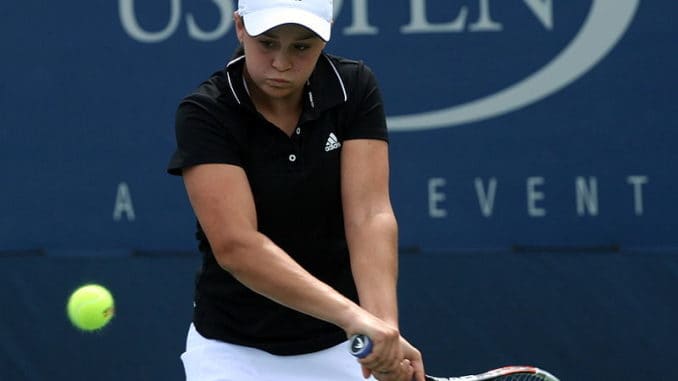
Over the past few decades, the mentality on tour has been that players need to rack up endless amounts of tournament victories and grand slam triumphs in order to feel like they have fulfilled their potential.
This approach has been championed both on the ATP and WTA tours by the likes of Serena Williams, Rafael Nadal, and Novak Djokovic, who continue to prolong their careers and defy their age to try and claim the title of “greatest player of all time”.
Ash Barty, however, took an altogether different approach, shunning such tennis orthodoxies to call time on her career at the tender age of just 25 and while ranked number 1 in the world. She would have undoubtedly been a strong tennis bet to win the remaining grand slams in 2022 but decided she had gleaned all the enjoyment she could from the sport and wished to focus her sporting talent elsewhere.
Here’s why that approach could be a popular one in the years ahead as coaching methods change, along with the way top pros think about the game.
Tennis players are coming around to the idea that spending their entire life within the confines of a tennis court might not be the healthiest lifestyle choice
Players Are Getting Burnt Out
Long before Barty made her shock announcement on social media, there were signs that something like this could occur; it had become clear that the mental and physical demands made on players were becoming unsustainable.
This has been highlighted at length by the likes of Naomi Osaka, who has taken multiple breaks from her career journey, often citing the pressures that the sport exerts on her.
There is also historical precedent to players leaving the tour long before their prime. One of the most high-profile examples of this was Björn Borg, who retired at the age of just 26. In the women’s game, there was Martina Hingis, who left the sport at an even younger 22, citing the constant pain she had to endure during training and matches.
Because some of the world’s top male players have made their personal brands out of being relentless robots, this has somewhat masked the long-running issues that tennis has at its midst, ones that the sport must now address properly in the wake of Barty abandoning it for pastures new.
High Prize Money Allows for Early Retirement
Something that shows no sign of slowing down any time soon is the earning power of top tennis stars, especially seeing as the women on tour now earn the same as the men.
This means that once off-court endorsements and the like are added up, a relatively successful player can feasibly retire by the time they are in their early or mid-twenties. This could drive many more early retirements.
Barty’s early departure from the WTA Tour has sent a shockwave across tennis, as it becomes clear that many top players are beginning to prioritize their own wellbeing rather than the sport
Tennis Needs Characters, Not Robots
In truth, tennis writers and broadcasters all over the world have been crying out for new and exciting stories to tell. For years the adoration poured on players such as Roger Federer and Rafael Nadal has descended into something of a sickening carnival of tired platitudes and strained adoration.
This is perhaps driving the noticeable shift amongst young fans towards more charismatic players, who might be more hell-bent on entertaining their followers than grinding out win after win after win. Nowhere was this more evident than in the men’s doubles at the Australian Open 2022, where Nick Kyrgios and Thanasi Kokkinakis collaborated to whip up a fan frenzy in Melbourne.
The exciting duo went on to win the whole tournament, but it was more the fact that the crowds they drew were young and vibrant that had many old heads in the tennis establishment sit up and take notice. After all, doubles tournaments are usually thinly attended events at the best of times.
This shows that, perhaps, rather than making only the biggest winners on tour the stars of the show, the sport’s governing bodies could instead promote those players who make the game appear attractive to new generations.
This in turn could make such characters feel more at home on tour and prevent them from growing bored or burning out long before they reach the prime years of their respective careers.